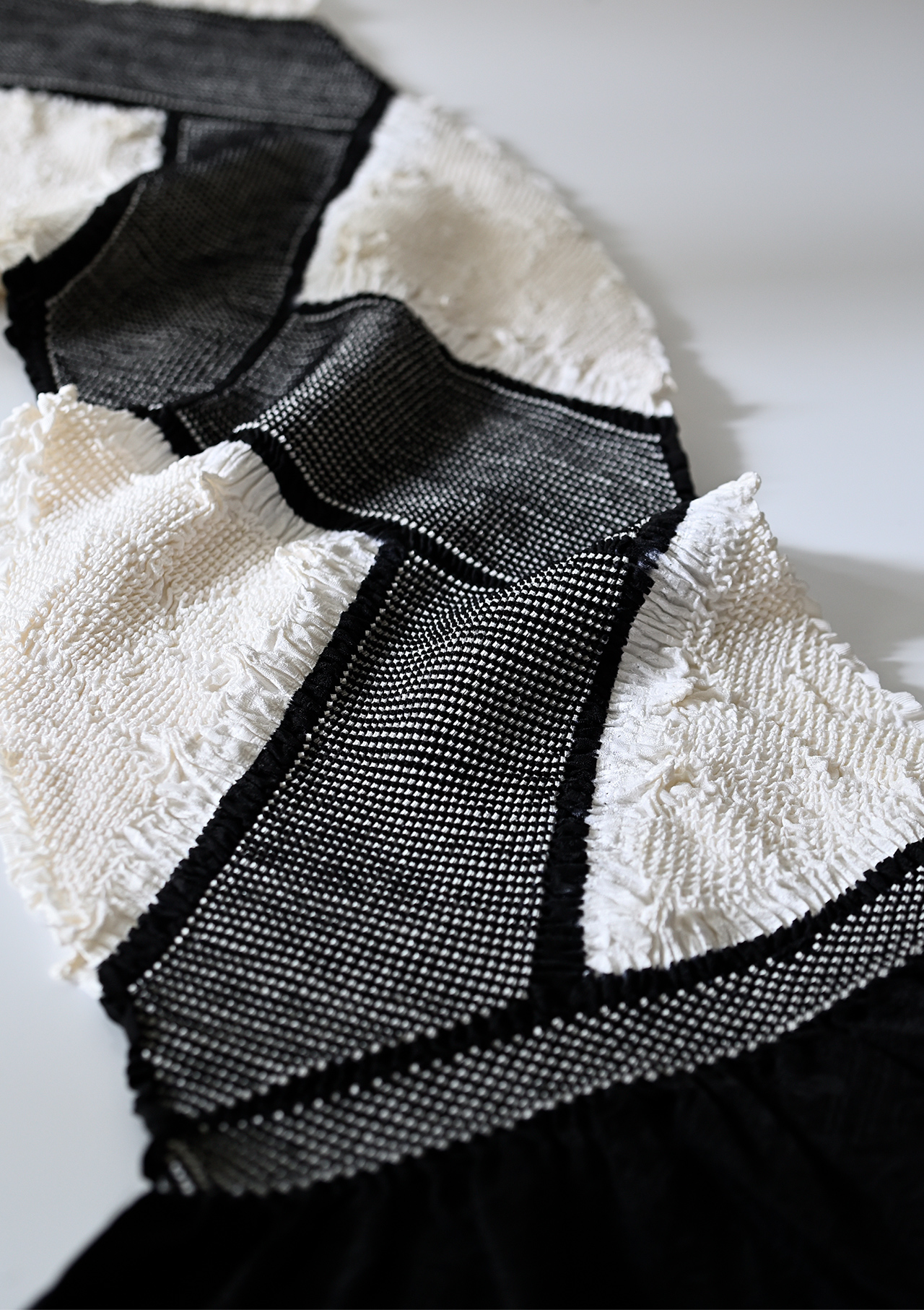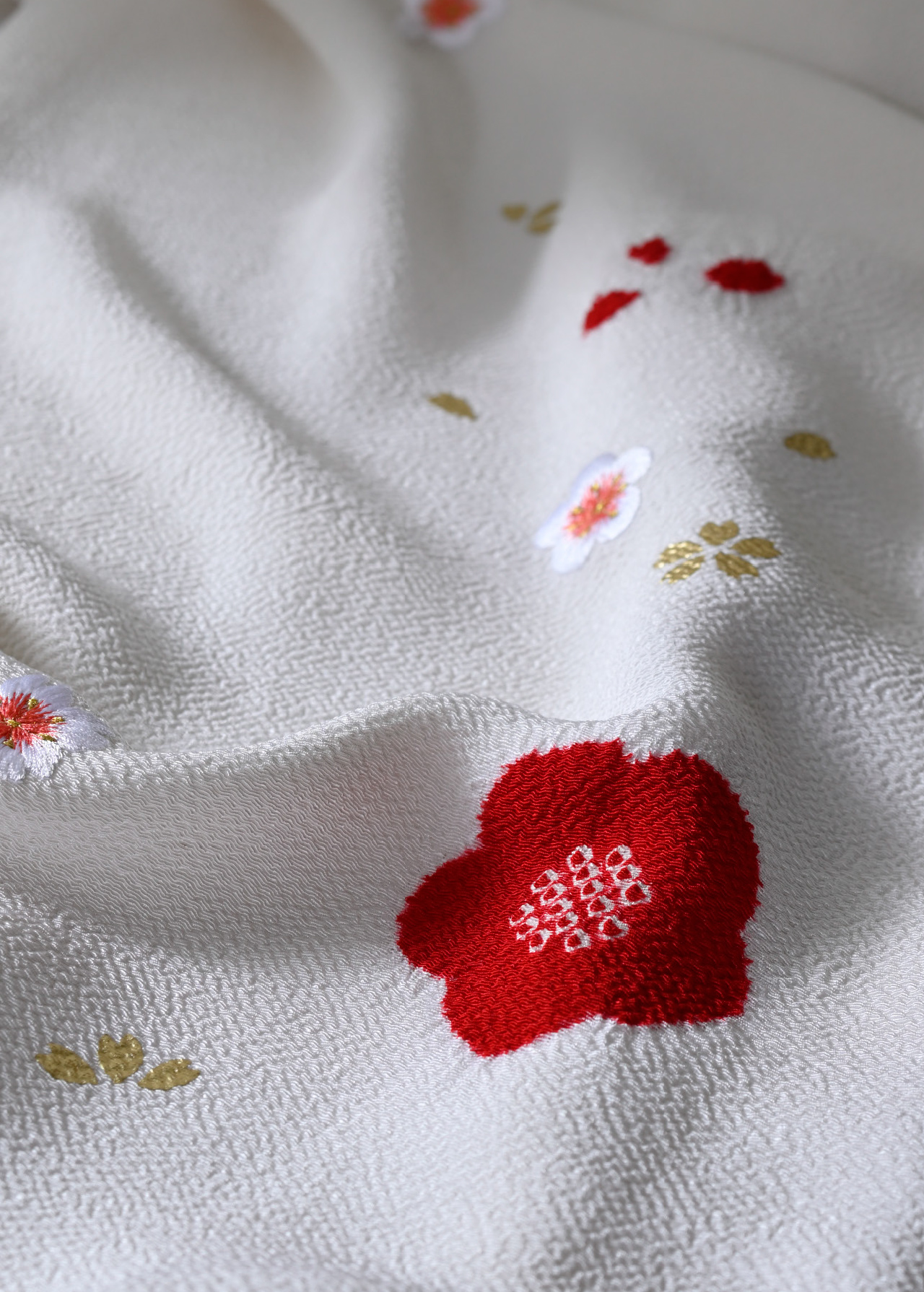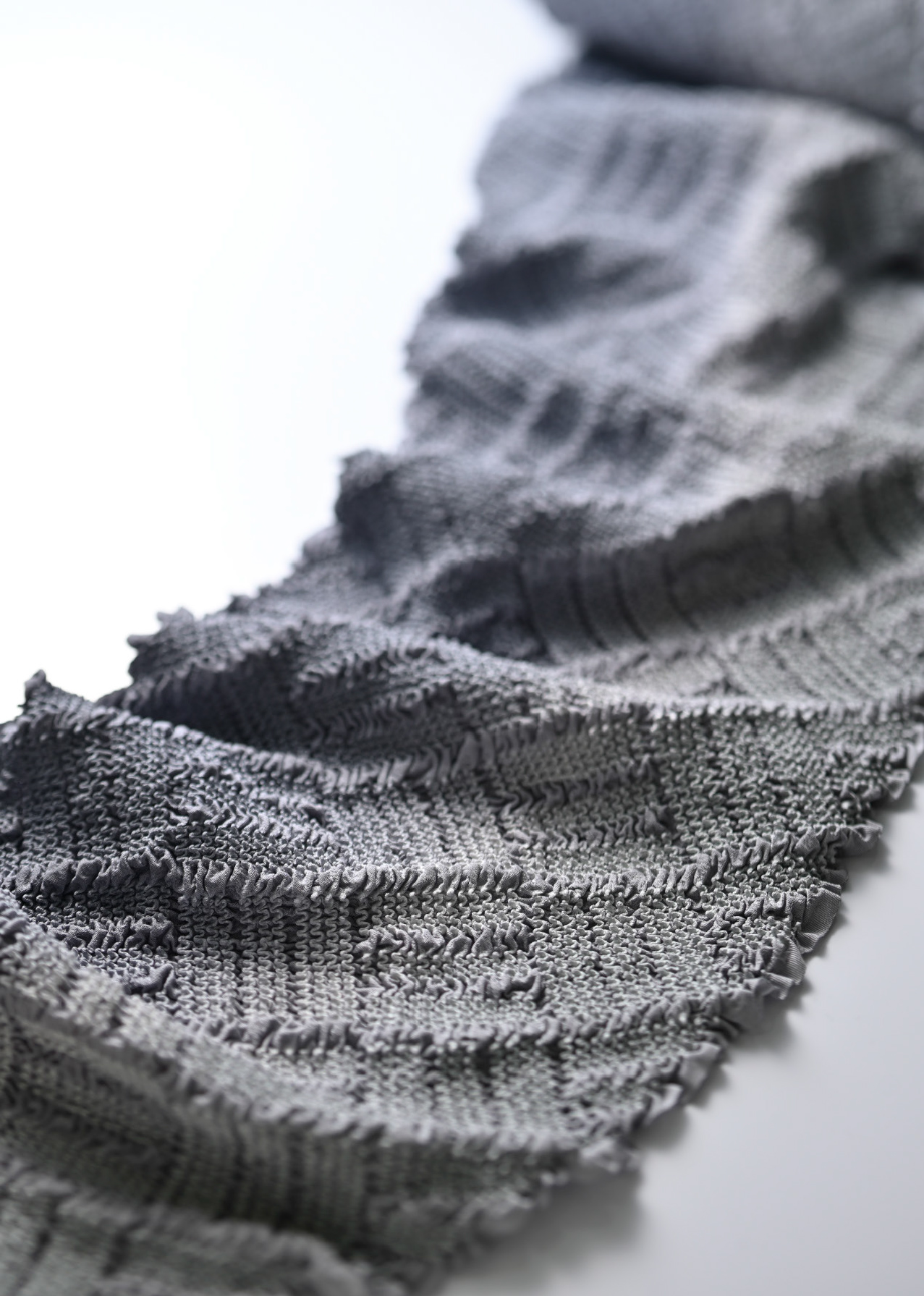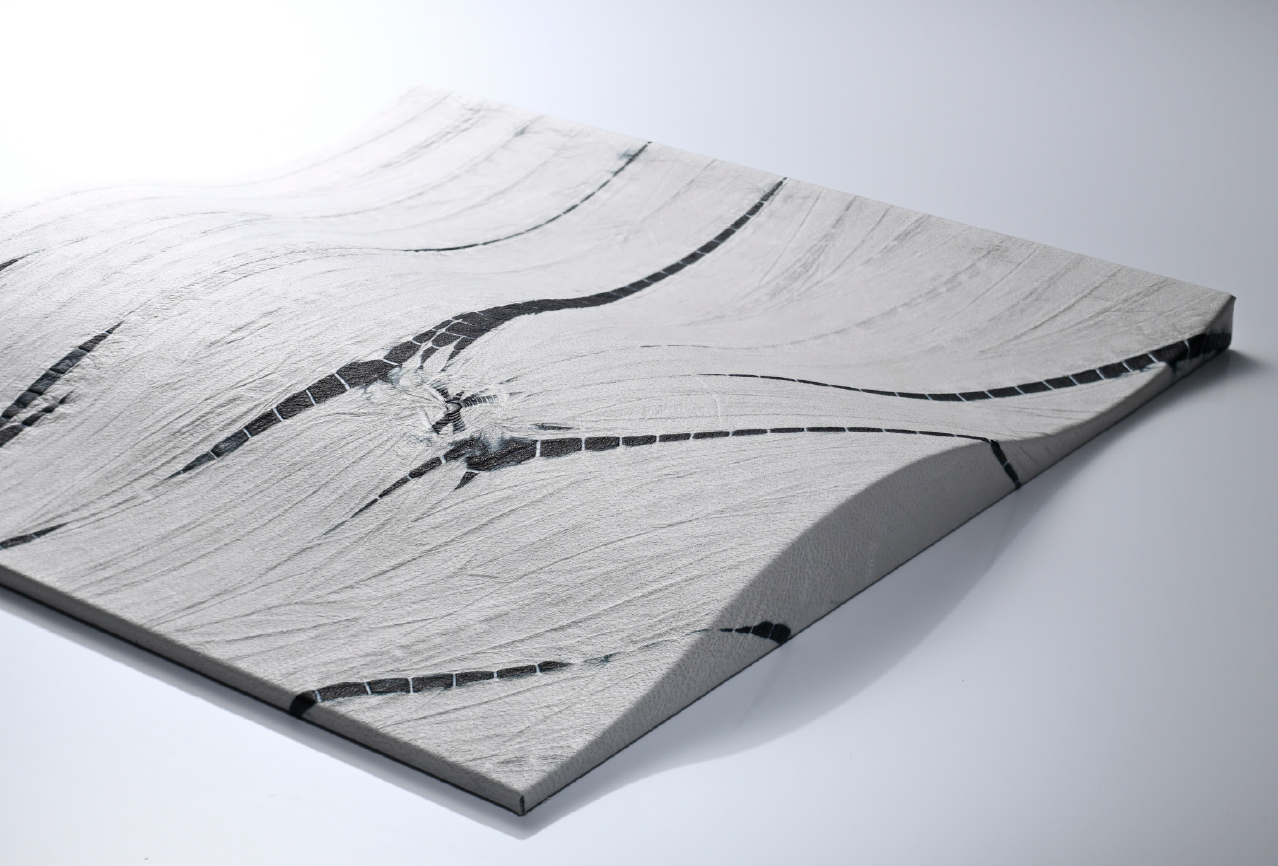京鹿の子絞 京鹿の子絞振興協同組合
KYO-KANOKOSHIBORI DYED TEXTILES 1
1
- 数種類の絞りの使い分けでデザインを表現した振袖用総絞り帯あげ。
布を糸で括り圧力をかけることで、その部分が染まらずに白く残り、模様となるという絞り染めの歴史は古く、京都において千数百年前から行われてきたとされています。鹿の子絞はその一種で疋田絞とも呼ばれ、模様が小鹿の背中の斑点に似ていることから名付けられました。さらに括られた部分の生地は小さな突起やシワとなって残るため、独特の風合いと陰影も加わります。これらはすべて手作業で行われるため、「総鹿の子」と呼ばれる振袖のきものには、18〜20万粒もの括りが作られます。絞りの種類は人目絞、傘巻絞、縫締絞など50種類にもおよび、色と模様の組み合わせによりさまざまな仕上がりが得られます。きものをはじめとする和装のみならず、ドレス地やストールなどにも用いられますが、近年では、柔らかい鹿革に絞り染めをほどこしてアートパネルに仕立てたり、立体的な傘巻き絞りにしたコットンでトートバッグを作ったりと、新しいデザインが登場しています。
Tie-dying techniques in Kyoto have a long history stretching back a thousand years or more. The technique involves tightly tying the cloth with threads and applying pressure before dyeing so that a pattern is created when the tied part remains white. Kanoko shibori (also called hitta shibori) is one type, and it is so named because the pattern resembles the spots on the back of a small deer (kanoko literally means "fawn"). The fabric in the tied part retains bumps and wrinkles, giving it a unique texture and shading. This fabric is hand-made and a long-sleeved kimono (furisode) called sō-kanoko (made entirely in kanoko) has 180,000 to 200,000 grains tied together. There are 50 types of shibori, such as hitome, kasamaki or nuishime and various finishes can be obtained by combining different colors and patterns. It is used not only for kimonos, but also for dresses and stoles. In recent years, kanoko shibori has been used for new design items such as art panels and three-dimensional kasamaki shibori cotton tote bags.
 2
2
 3
3
 4
4
- :輪出し絞りで梅の花芯を表現したショール。
- : ストール。絞りの粒の並べ方によって模様が生み出されている。
- : 絞り染をほどこした鹿皮を立体的に仕立てたアートパネル。
(1,2 株式会社種田 / 3,4 株式会社京都絞美京)
1: Several kinds of shibori used for designing a sō-shibori obi-age sash for a furisode (long sleeve kimono). 2: Round shibori representing the core of plum blossoms. 3: A stole. The patterns are created by arranging shibori grains. 4: A kanoko shibori made into a three-dimensional art panel. (1,2 Taneda / 3,4 Kyoto Shibori Bikyo)

